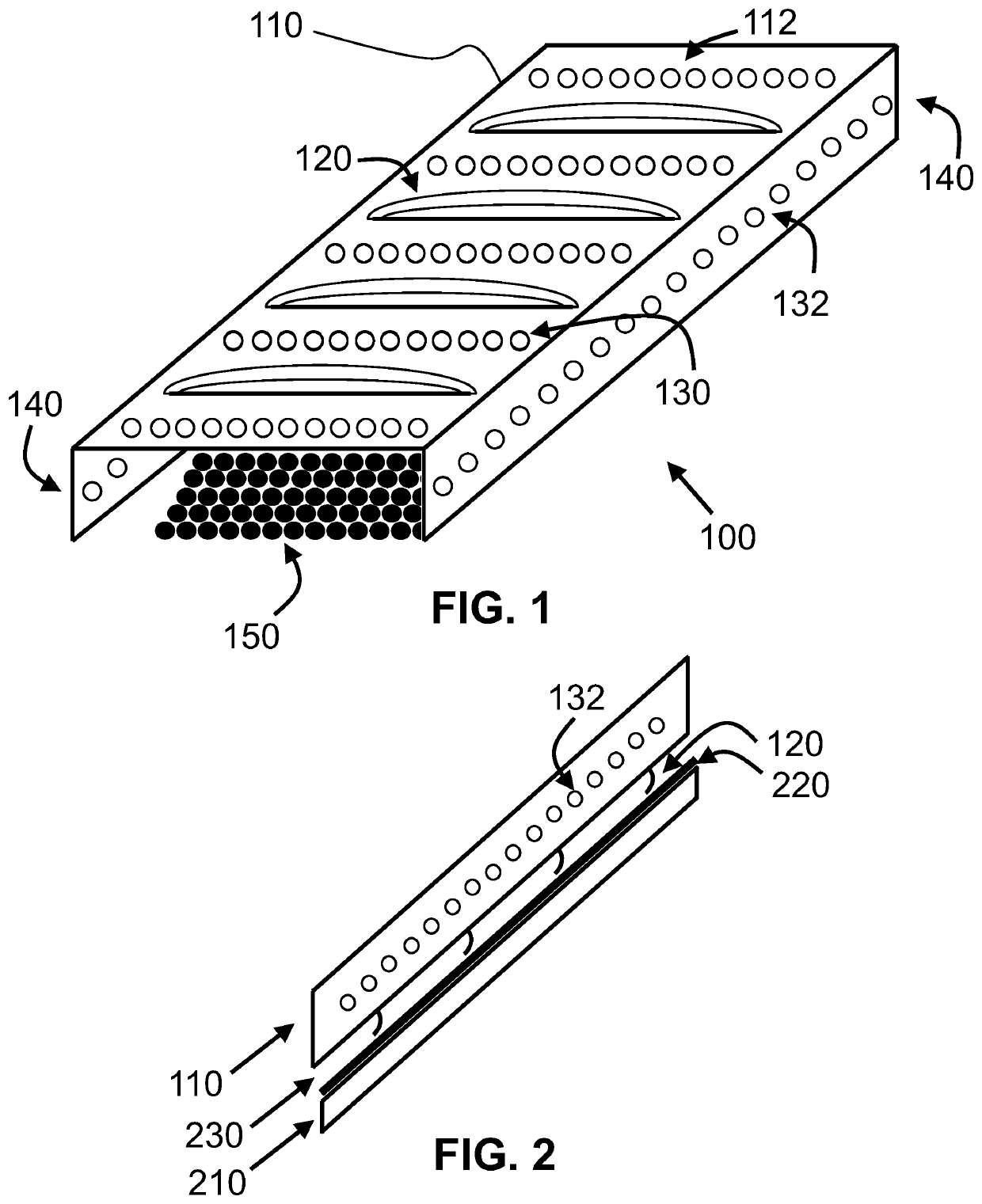Thatch roofing system
a technology of thatch and roofing, applied in the field of thatch roofing systems, can solve the problems of reducing availability, structural damage to the building, and the onset of mold and rot in the thatch before the start of the rainwater cycle, and achieve the effect of reducing the pitch of the roo
- Summary
- Abstract
- Description
- Claims
- Application Information
AI Technical Summary
Benefits of technology
Problems solved by technology
Method used
Image
Examples
Embodiment Construction
[0023]Embodiments of this present invention makes use of modern harvested straw and / or hay (of various varieties) currently deemed unsuitable for traditional and contemporary roof thatching. This is achieved by turning on its head the concept of thatch having to provide the building structure's impervious water barrier. The invention overcomes this concept by combining and affixing an aesthetically pleasing natural outer thatch shell to that of a modern roof which provides the critical water, fire, and thermal barriers (e.g. 220, FIG. 2).
[0024]The outer thatch shell and inner modern roof are securely fixed together in a manner that allows a suitable upwards airflow space 230 between the two components to facilitate quick drying of the thatch panel following precipitation.
[0025]Embodiments of this invention also enables a concealed water drainage system attached to the inner modern roofing component to safely and efficiently drain off any moisture (or water) that might percolate thro...
PUM
 Login to View More
Login to View More Abstract
Description
Claims
Application Information
 Login to View More
Login to View More - R&D
- Intellectual Property
- Life Sciences
- Materials
- Tech Scout
- Unparalleled Data Quality
- Higher Quality Content
- 60% Fewer Hallucinations
Browse by: Latest US Patents, China's latest patents, Technical Efficacy Thesaurus, Application Domain, Technology Topic, Popular Technical Reports.
© 2025 PatSnap. All rights reserved.Legal|Privacy policy|Modern Slavery Act Transparency Statement|Sitemap|About US| Contact US: help@patsnap.com

